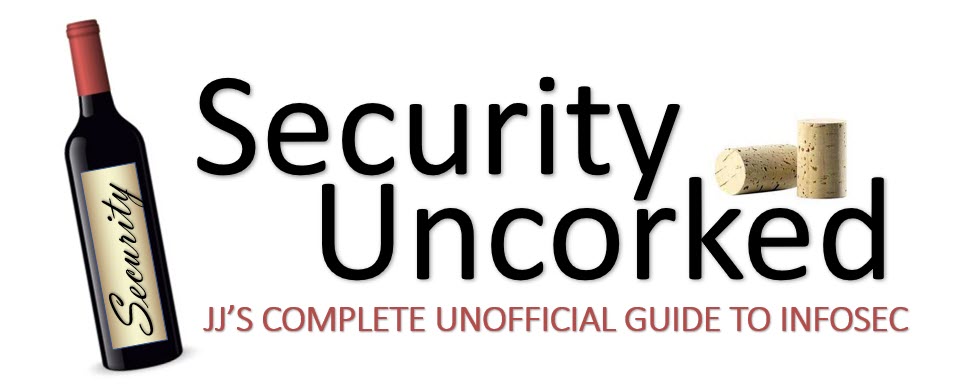Well, you’re not necessarily hearing it hear first, but it’s likely… unless you read IEEEdocs religiously (as I do) or read Paul Congdon’s standards updates at the ProCurve Networking site.
If you have no clue what 802.1X is, read my recent technology primer first. If you’re already familiar with 1X, you’ve probably heard about some of the 802.1X additions- the 802.1AE (MACSec) and possibly 802.1af (the key agreement for MACSec)… but that’s just the tip of the iceberg, and what’s hiding underneath will knock your socks off!
We’re currently at the 802.1X-2004 edition, with the group working on the REV and hoping for an early-2009 release. When IEEE makes additions (such as AE and af) they’re just afterthoughts and changes tacked on to the end of the standard. But when they do a revision , as they are now, they’re opening up the whole can of worms and all parts of the standard are opened for evaluation and modification. Yee-haw!
So, what’s in this new revision and what can we expect from 802.1X-REV? That’s what I wanted to know, and I’m sure you’re curious too. I was lucky enough to catch a quick call with Paul Condon earlier this week and get some of the inside scoop. Paul is ProCurve Networking’s CTO, but more importantly for our purposes today, he’s the Vice -Chair of the IEEE 802.1 working group and is intimately involved in 1X and a variety of other networking, security and authentication standards.
1) Encryption & Key Exchange : The first goal in updating 802.1X was to add security with encryption, specifically on switch-to-switch links. Of course, with encryption comes the need for fast, secure key exchange, so we ended up with 802.1AE and 802.1af as answers to the first set of goals. The encryption will require hardware refreshes, and vendors are already gearing up for that. The benefits of encryption are pretty obvious, so I won’t bore you with that. There are some fun little gems hidden in the AE/af set though. Even without using the encryption piece, we’ll be able to use the key exchange as a means of quickly (in ~4-5 packets) authenticating (or re-authenticating) switches to one another after a reboot. It will be a critical piece for maintaining availability and integrity in the network. And w e can do this piece without a hardware upgrade, which is pretty nifty.
2) Same-Port Multiuser Support: Here’s where the 1X-REV sauce starts tasting really good. The new revision is leveraging some of its security updates to support multi-user modes on a single port. And no, not by using multi-tagged VLANs, this is way cooler than that. In theory, multiple PCs, phones or other connected devices can connect through a single port, which would essentially be running multiple instances of 802.1X, letting each communicate securely. It’ll be similar in practice to how wireless APs segregate and encrypt traffic between the AP and the endpoint. I’m sure at first we’ll see software-based endpoint encryption support and of course, move towards hardware encryption and see NICs with the capability baked in. That’s still down the road, but the road is getting shorter.
3) Network Advertisement/Selection : Now the 1X-REV sauce is the best you’ve ever had- you’re gonna want to put this stuff on everything ! :) The 3rd goal of the revision is to add support for network advertisements on the wired side- which would be a similar experience to selecting the wireless SSID from a list of ones available on your laptop. But, it’s happening on your wired switch. Wild, right? They’re going to leverage the EAPOL types here to communicate from client to network. Imagine the possibilities…
All these new functions and features give 802.1X numerous new use cases. I think you’ll see parts of these technologies leveraged in various parts of critical networks everywhere. Sponsor ballots come at the end of the year, and they’re hoping to see something solid and released in early 2009.
You can see why I’m excited. The 802.1X-REV may be the evil stepchild for a while, but it’s coming. When it does, it’s going to rock our little network worlds and flip our thinking about wired security and network segregation upside down.
Of course, you’ll be seeing more on this from me, so hang in there!
# # #









[…] going to see a renewed interest in the wired security standards that are coming with IEEE’s 802.1X-REV because of the complete re-tooling of thought that will accompany […]
is the 802.1X-REV something that only switches hardware vendor will implement and hopefully release updates for current switches? does 802.1x connectivity solution developers need to do anything to support this new features especially Same-Port Multiuser Support feature. thanks.
[…] the ease of multi-device authentication and the security of it all will greatly increase with the 802.1X-REV. I certainly don’t want to dimish the importance of the new 1X revision- the MACSEc (802.1AE) […]
[…] With all those open RJ47 Ethernet jacks everywhere, it would seem to me that someone interested in data would just plug in, rather than recabling anything. The aforementioned security is done with encryption, and the standards are 802.1AE and 802.1X-REV. The first standard ensures the integrity and privacy of data between peers at Layer 2 (switches and NICs). The second standard, 802.1X-REV is currently being revised to automate the authentication and key management requirements for 802.1AE. If you’re a networking rocket scientist, you can read more about the potential implications for these revised standards here. […]
JJ, thanks for the update. The new additions to 802.1x certainly seem useful. Now if there was only a standardized way to send/receive LLDP on an unauthenticated port.